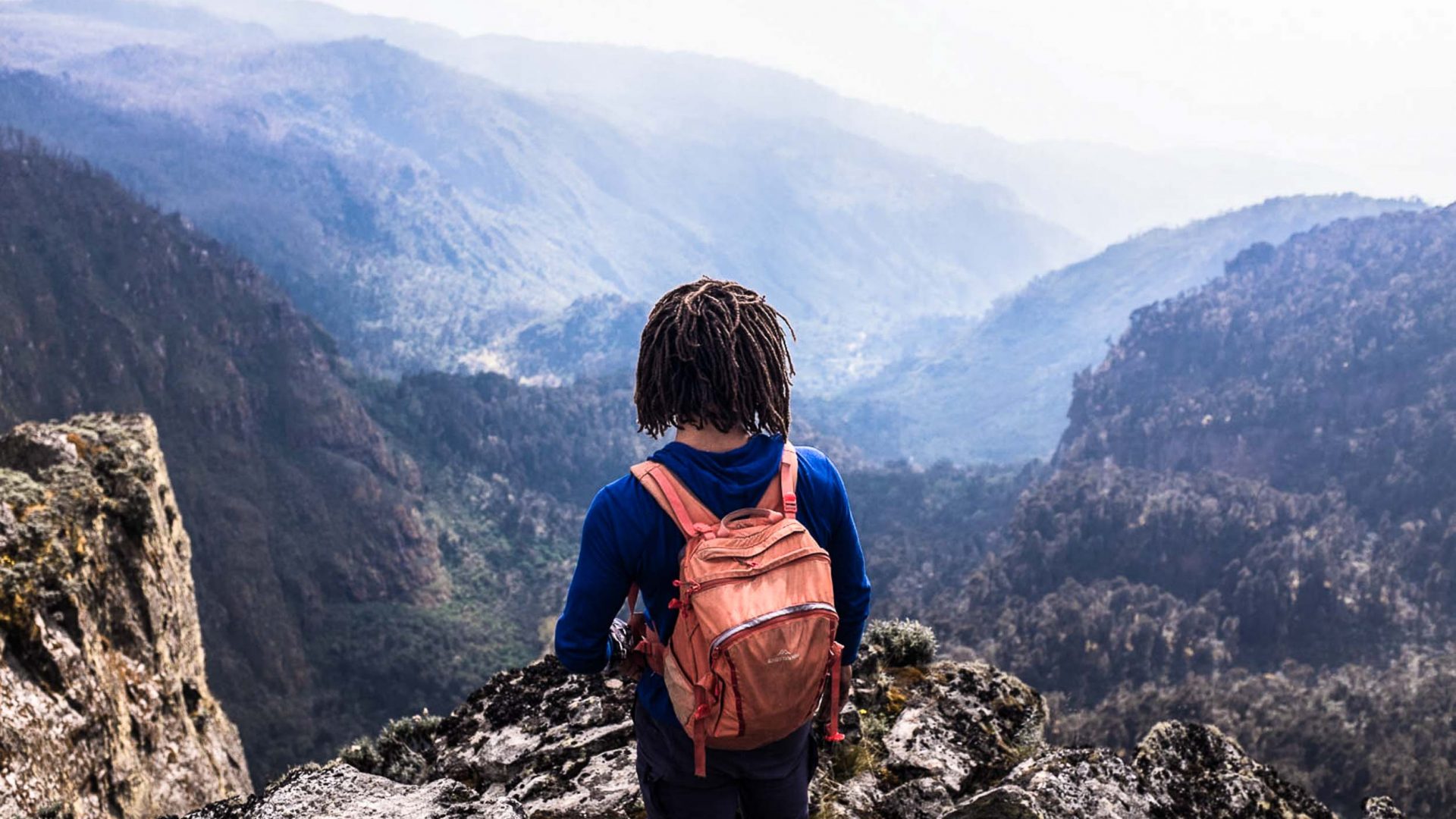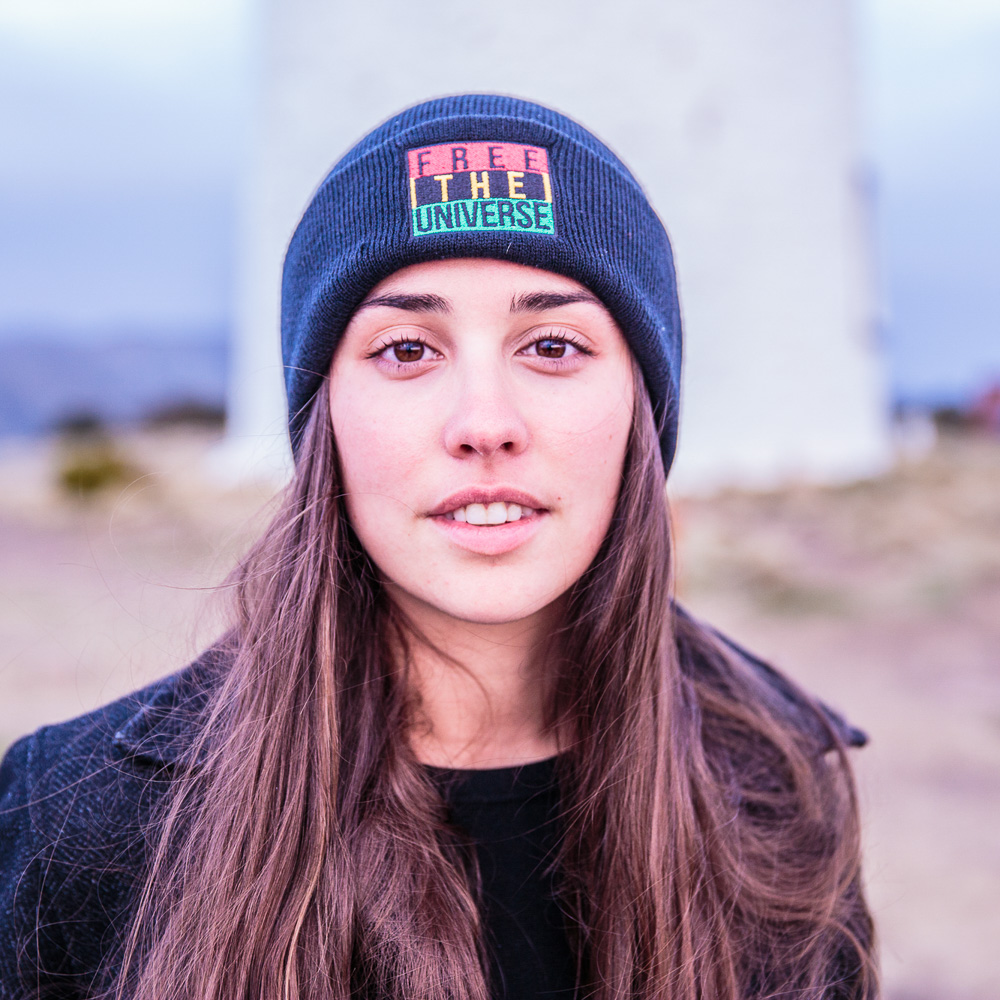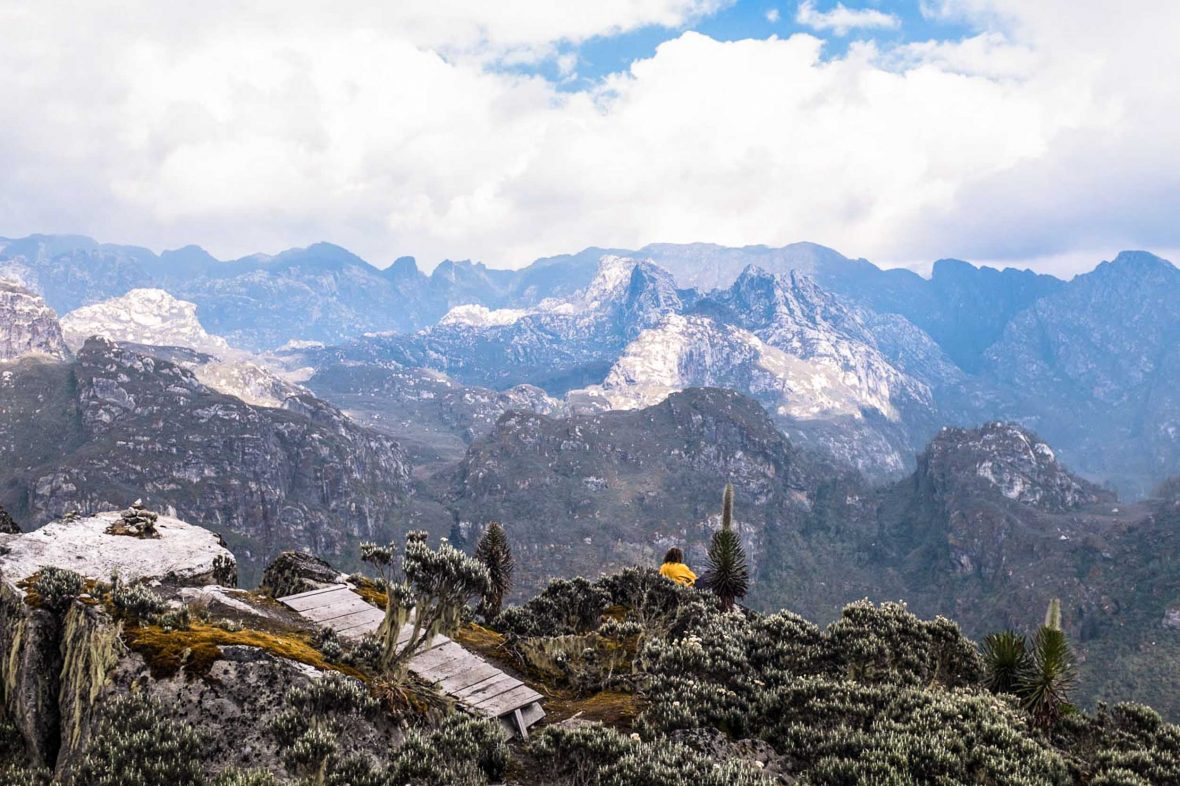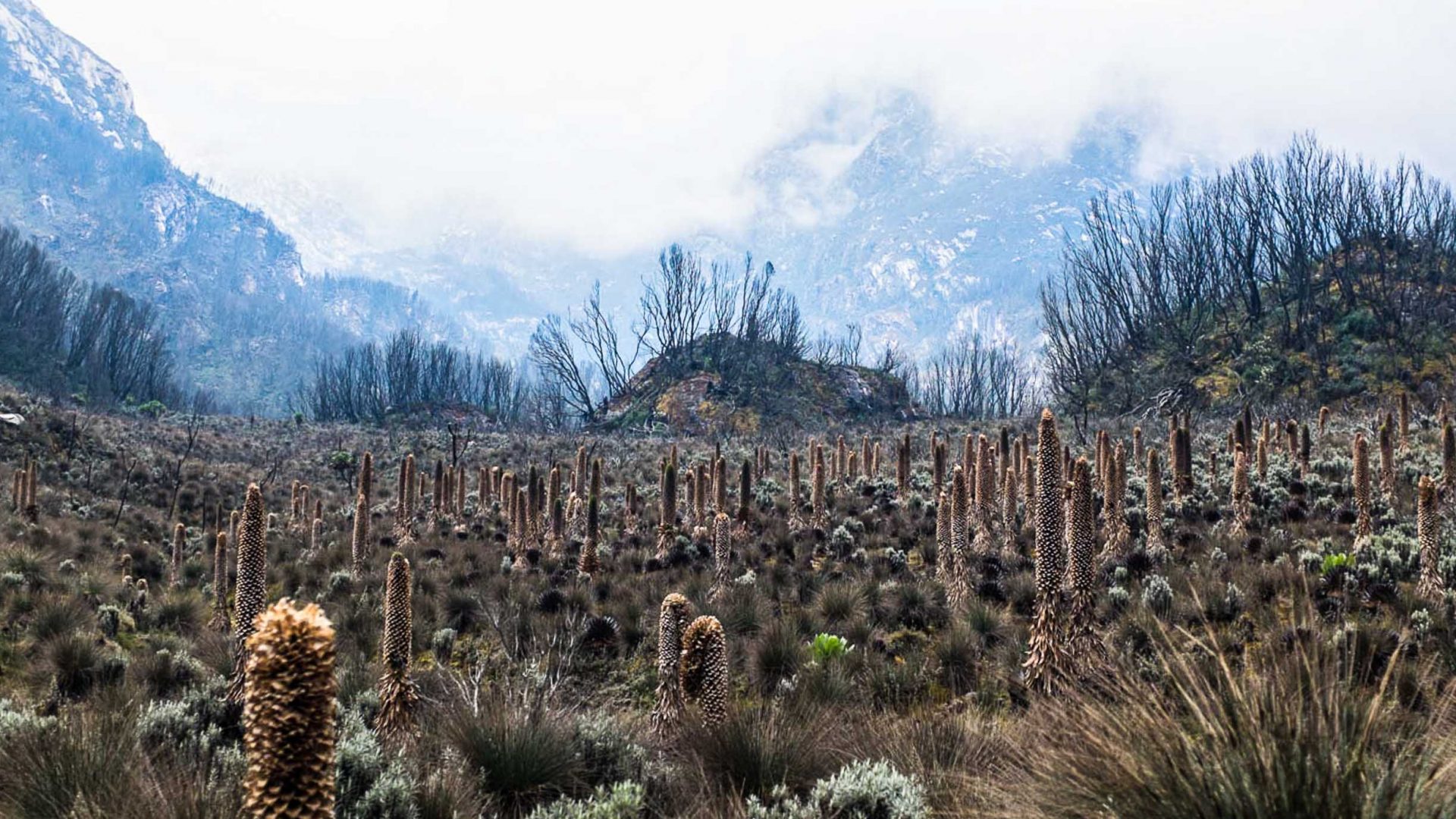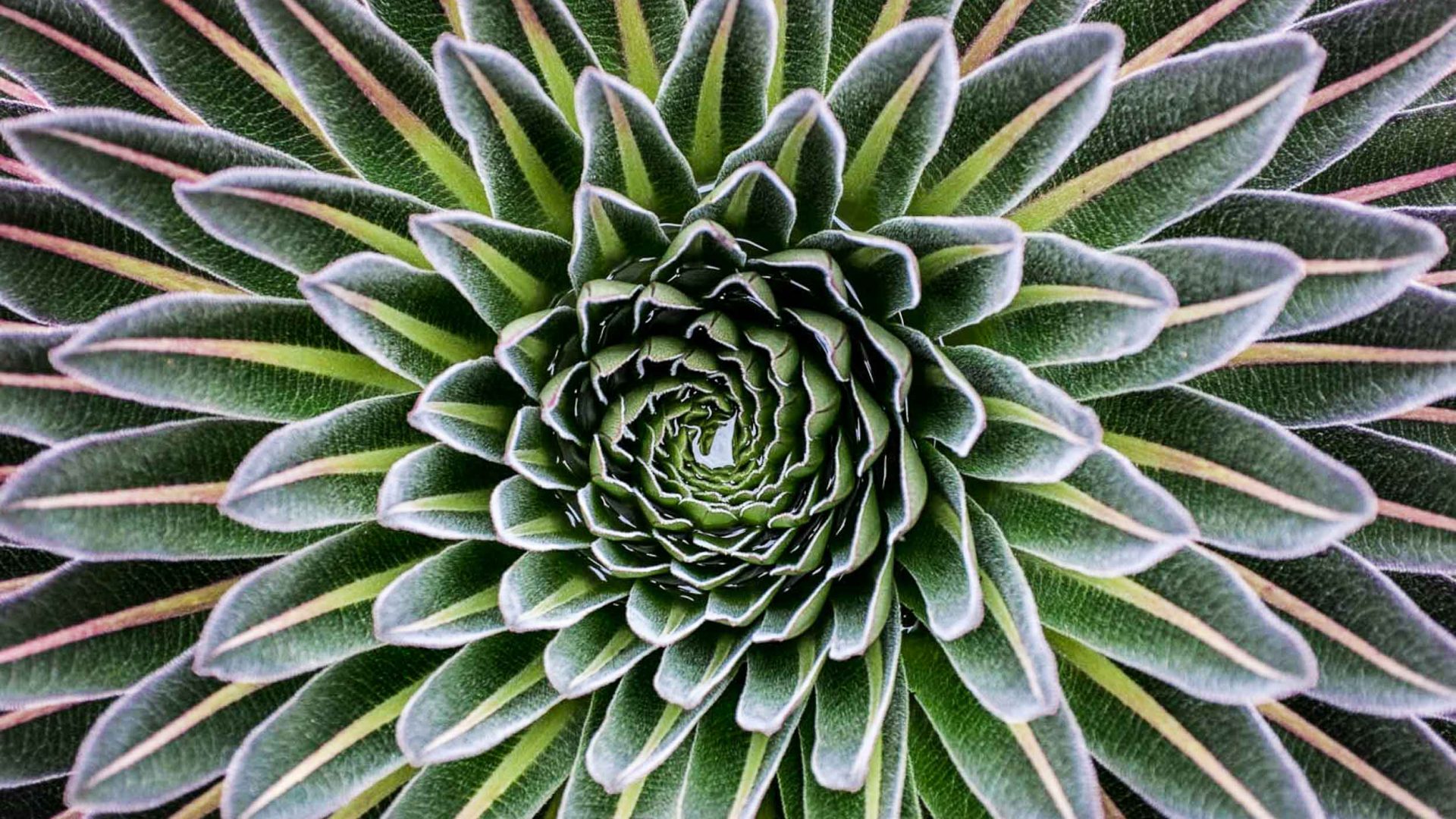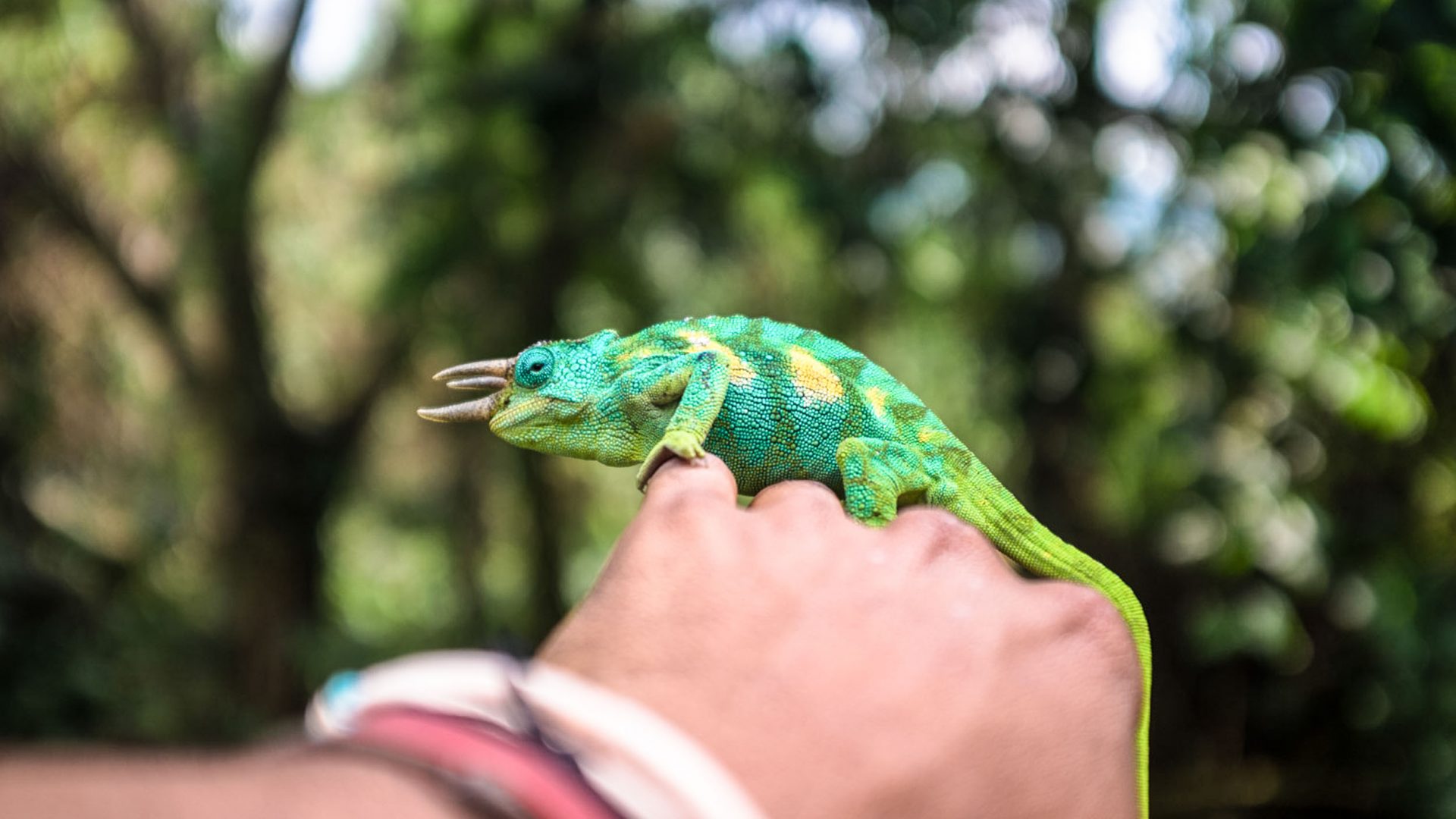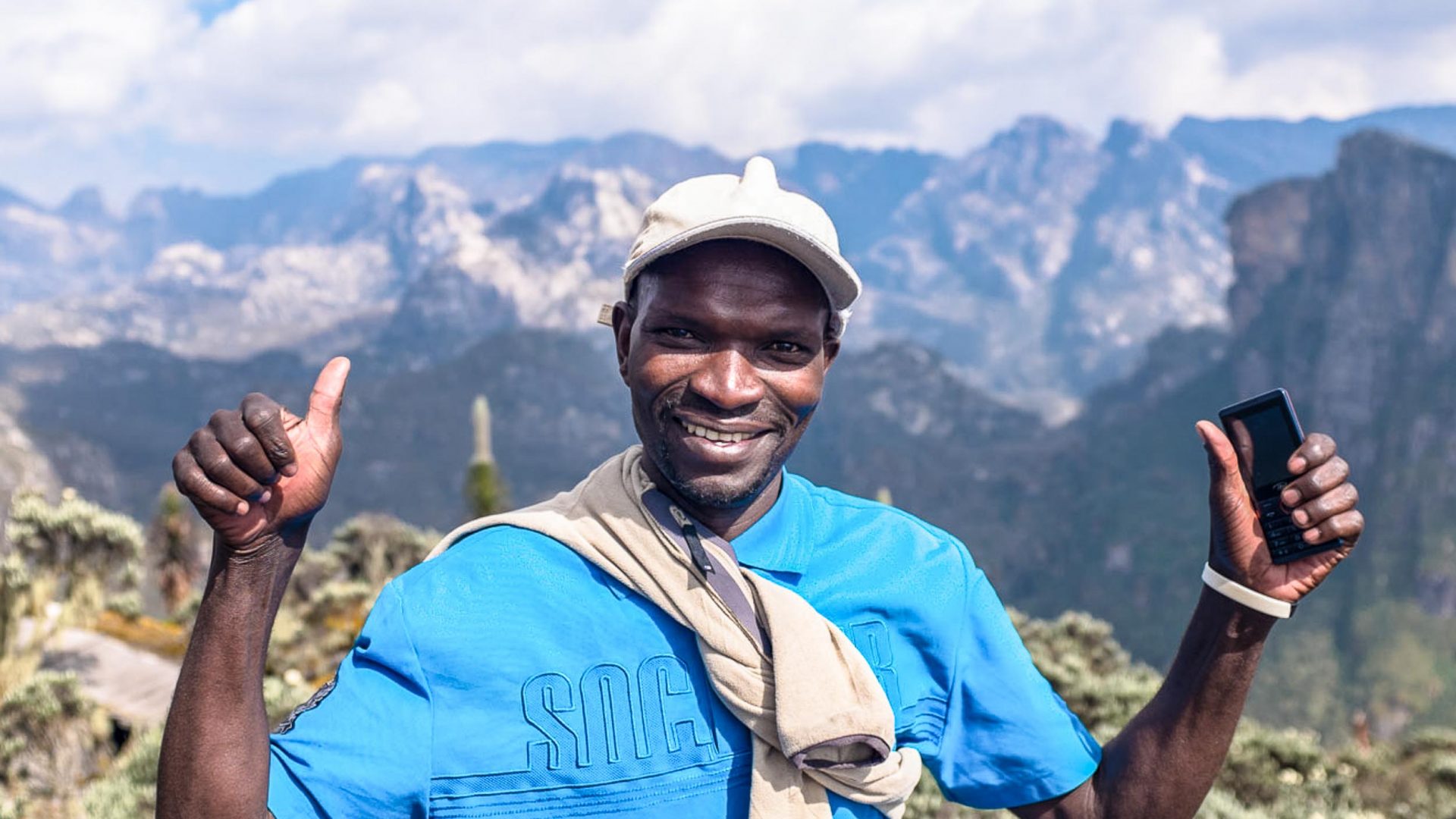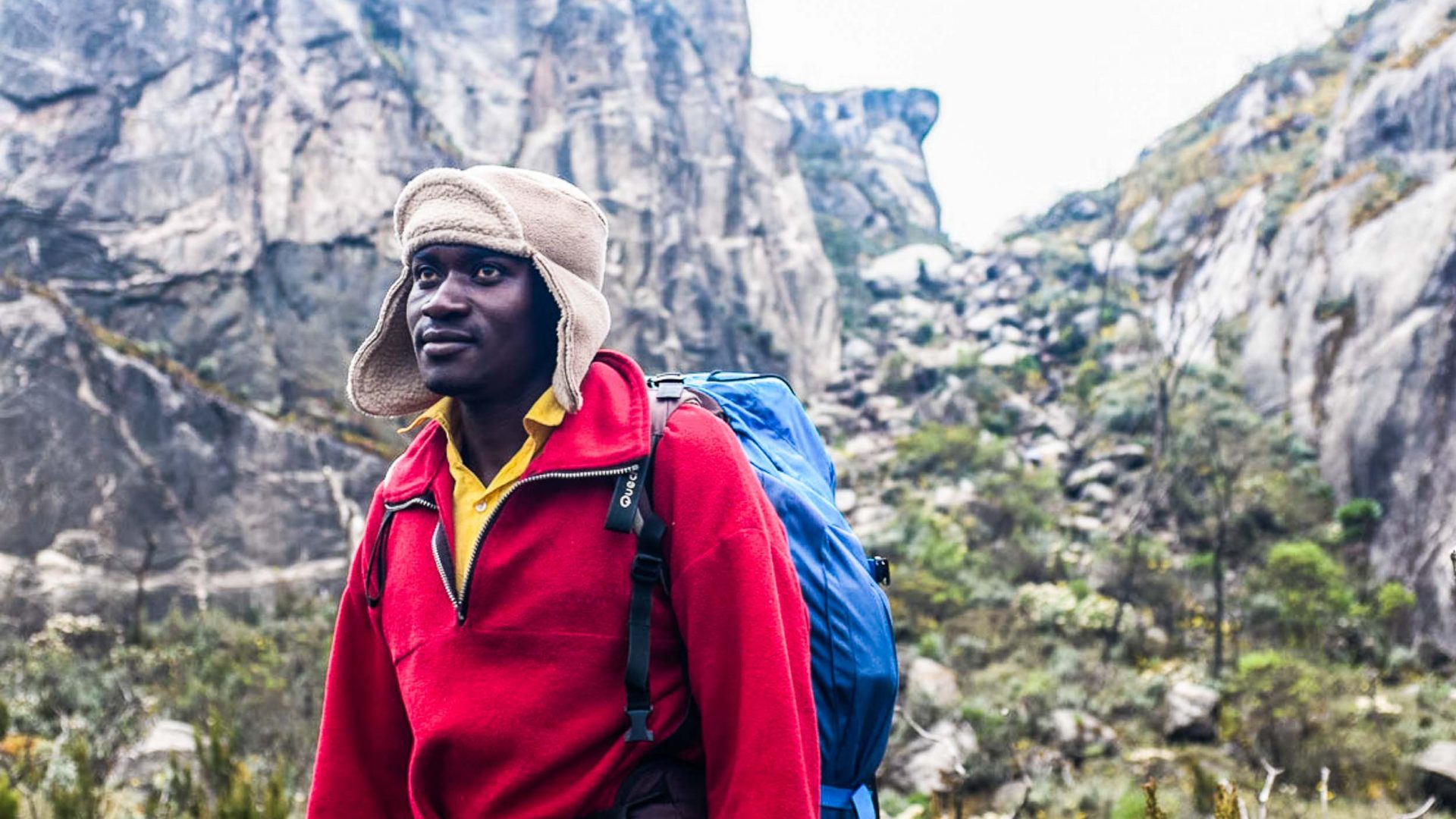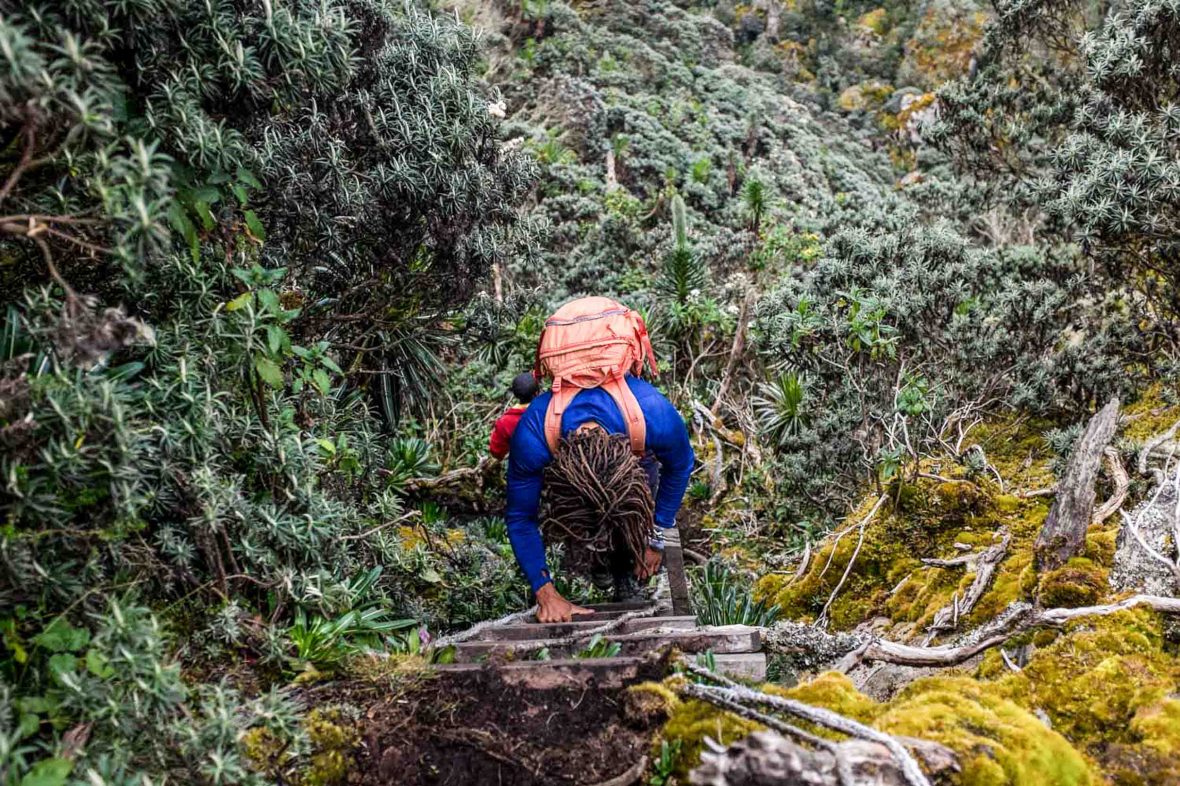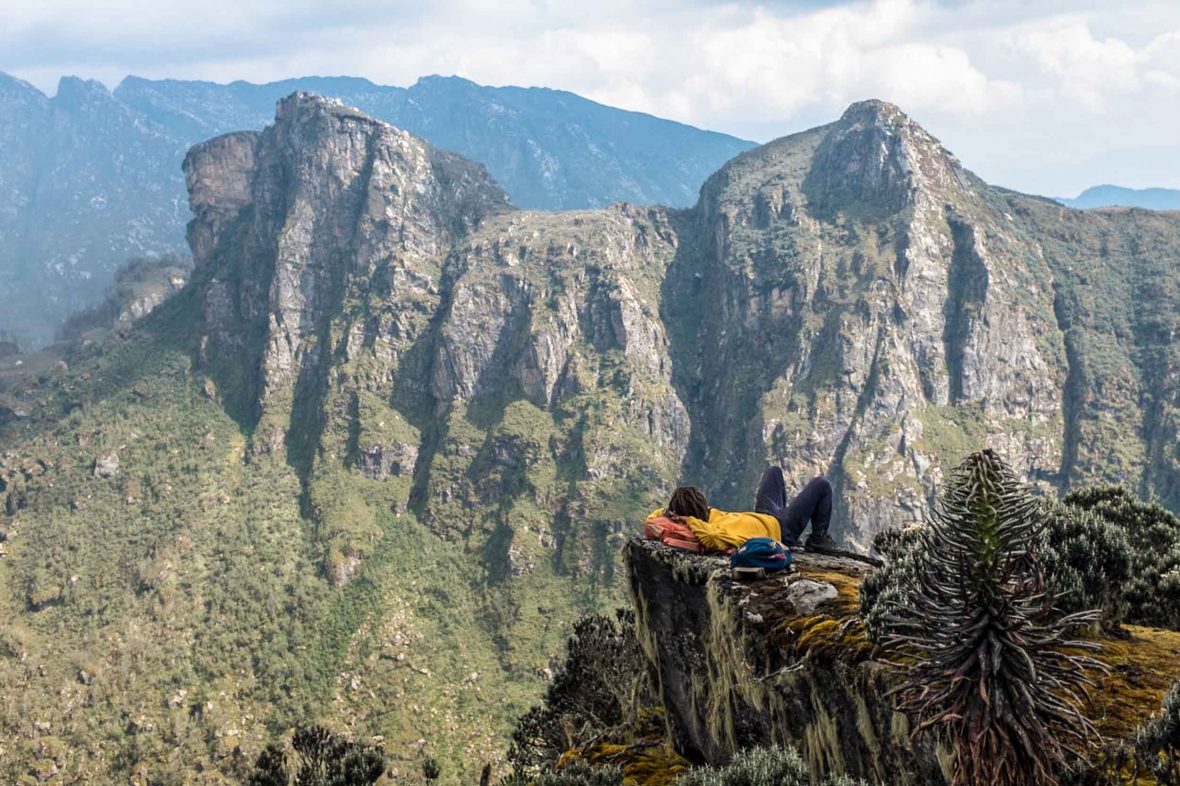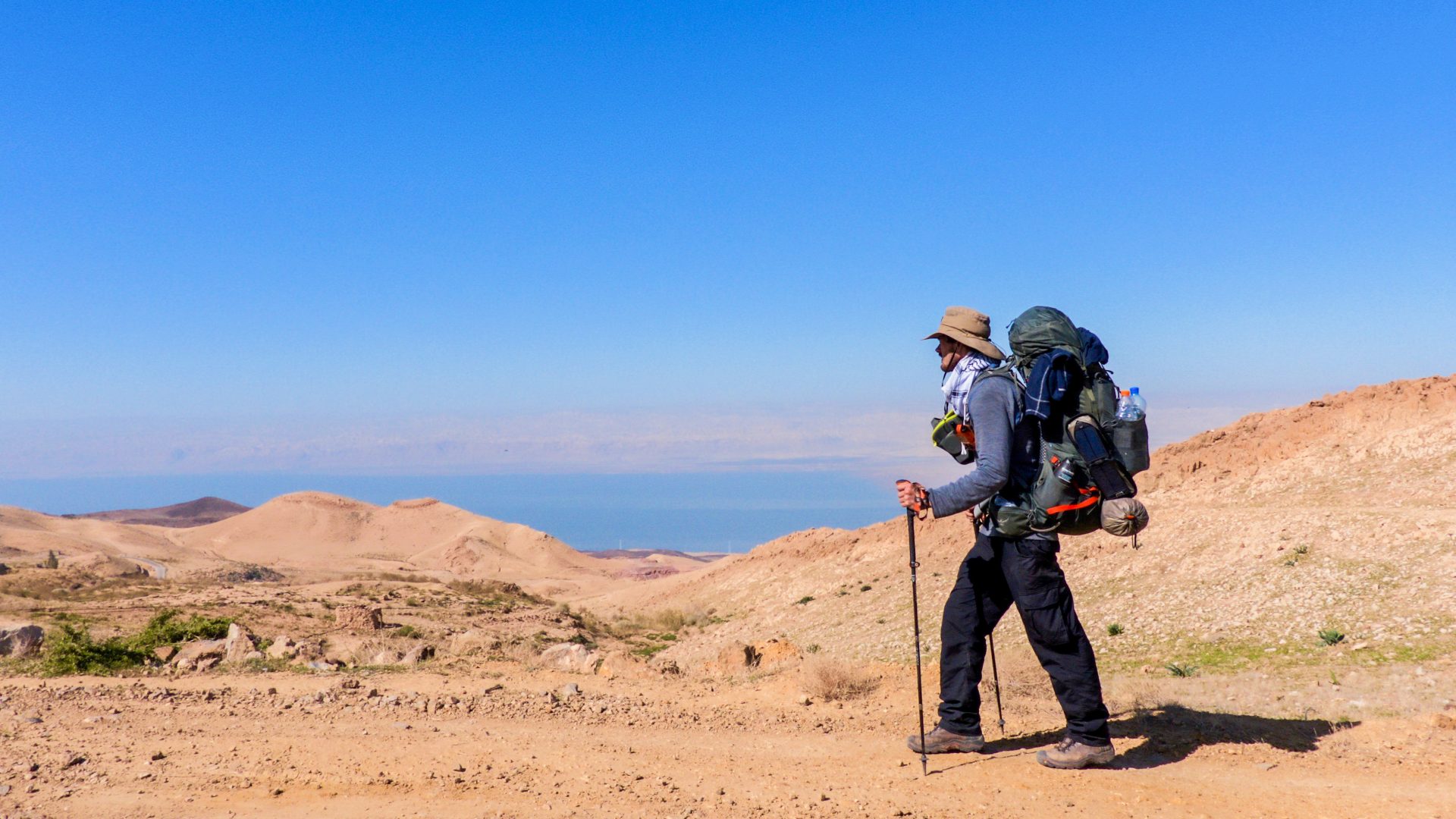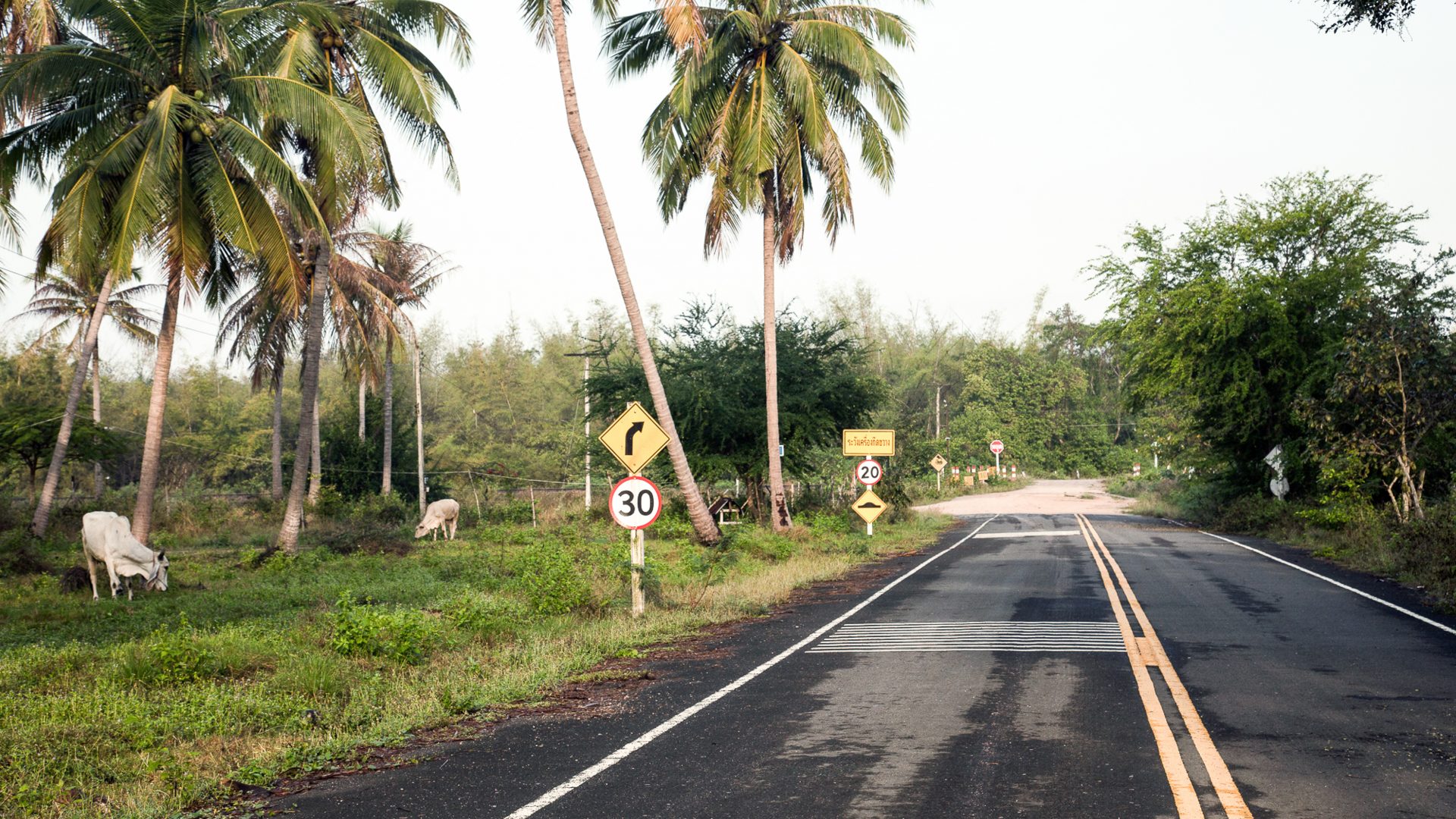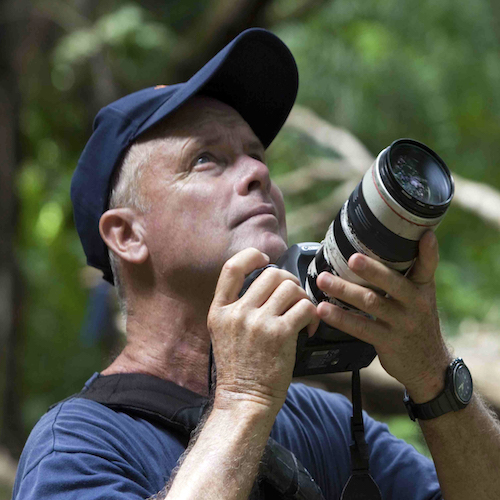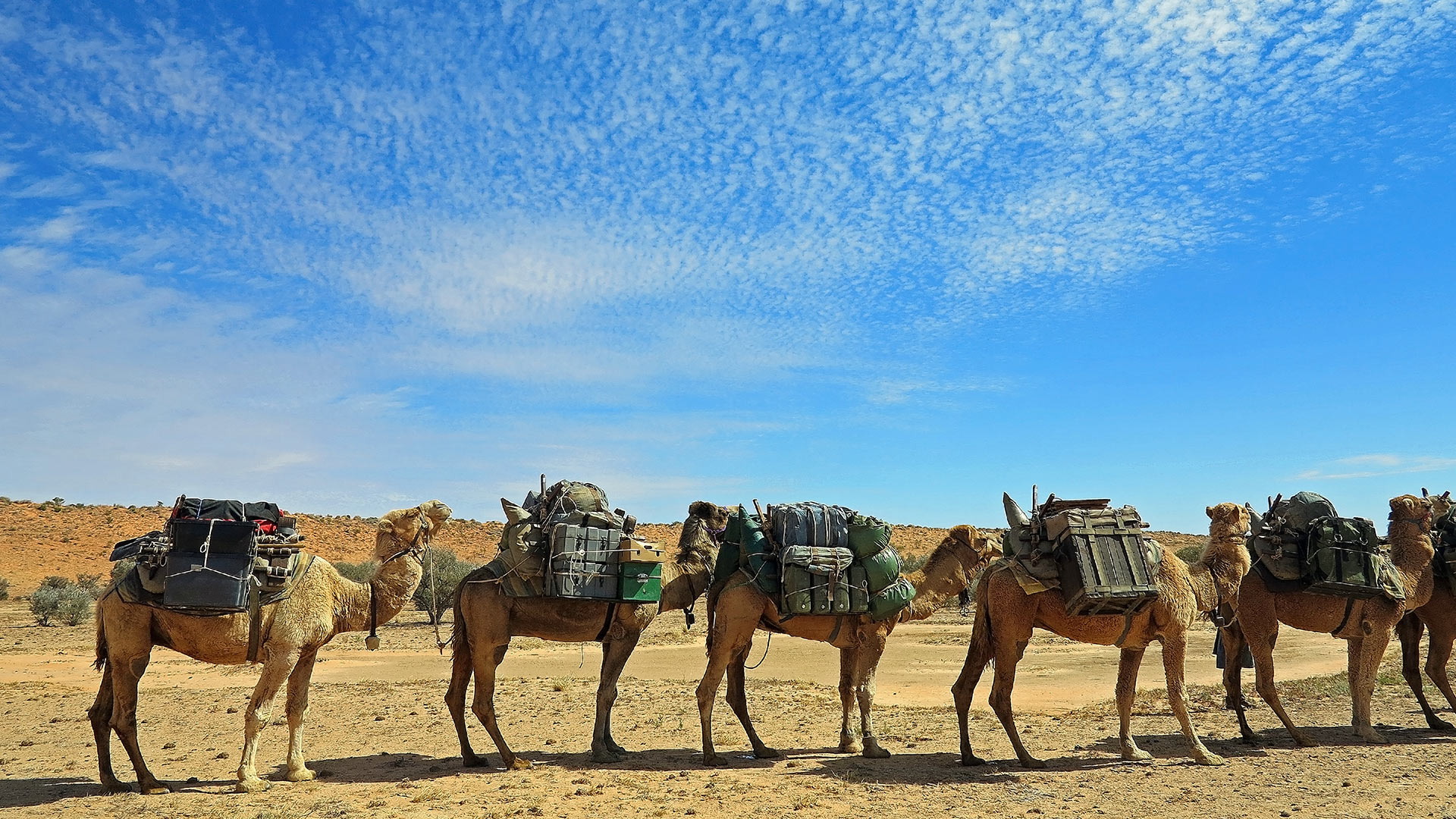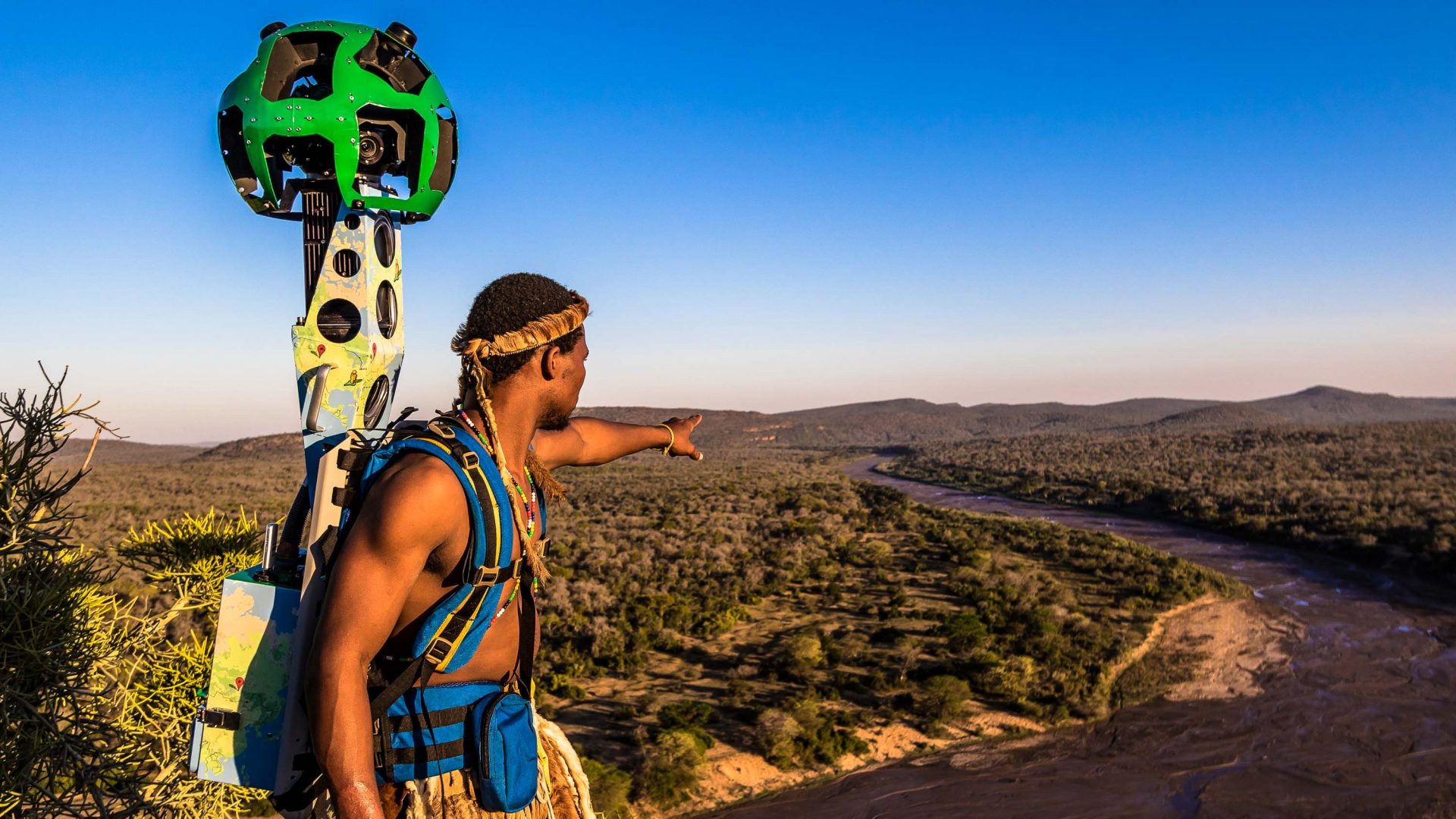Editor’s note: This article was published before the coronavirus pandemic, and may not reflect the current situation on the ground.
Uganda’s Rwenzori Mountains are home to six of Africa’s 10 tallest peaks. But where Kilimanjaro welcomes some 50,000 hikers every year, Rwenzori barely breaks 1,000. Welcome to the home of Africa’s secret summits.
The oldest person to summit Uganda’s Margherita Peak was a Canadian woman named Beryl Park. She was 78 years old and she topped the 5,109-meter (16,761 feet) pinnacle after just five days of hiking in 2010—a feat so impressive, it’s on par with some of the world’s greatest mountaineering exploits.
Fast forward eight years and I’m in the remote Rwenzori Mountains National Park following—slowly—in Beryl’s boot steps. While I’m not here to make the summit push (Margherita is incredibly technical and not for the crampon-less) I am hoping to reach Mutinda Lookout, a 3,975-meter-tall (13,041 feet) block of granite towering over the valley.
The park is home to not only Margherita Peak, Africa’s third highest spike, but it’s also the playground for six of the continent’s 10 tallest mountains—a little-known, but impressive, African geography fact.
Given the fact there are more horns here than you could poke a hiking pole at, the Rwenzori Mountains should, by all accounts, feature on the wishlist of any self-respecting summit-seeker. But alas, they don’t. The tough terrain, relative isolation, and overshadowing popularity of Mount Kilimanjaro (5,895 meters/19,340 feet) and Mount Kenya (5,199 meters/17,057 feet) sees the park remain largely invisible to tourists. Tourism boards would call it a shame; conservationists would call it a miracle.
As the colorful rainforest gives way to dense thicket, we stop by an Avatar-esque ravine to catch our breath. Unfortunately, my breath seems to be hard to come by and I’m soon making a noise that resembles a broken vacuum cleaner.
As I try to suck air into my cramping lungs with the tenacity of a struggling Dyson, my thoughts turn to Beryl. I’m certain that in a past life she must have been born a mountain goat. How else did she waltz up this peak? I have twentysomething youth on my side and I’m drowning in lactic acid.
RELATED: The Middle East’s very own Inca Trail
My hiking partners don’t seem to have the same problem: Abel and Rasto are two insanely speedy local guides, each with over 10 Margherita ascents under their belts, and Ari is a 22-year-old outdoor instructor who discovered the Rwenzori Mountains a week ago and dropped all other Uganda plans to hike it. What sold him, he tells me, was the promise of a wild Africa—without the crowds.
And it’s true. Compared to the 50,000-odd climbers who push for the summit at Kilimanjaro every year, the Rwenzori Mountains are a ghost town. Official statistics suggest that between January and October 2017, the park had only 693 people hike its higher reaches. That’s 1.39 per cent of the hikers you’ll find on Kili.
The next day, we stop to share lunch with park rangers armed with machine guns, who fill their water bottles at crisp streams. With every hour and every altitude gain, the landscape seems to shift, moving effortlessly from thick bamboo forest to heather zone and into the Afro alpine planet. Trees drip with Old Man’s Beard, foreign plants sprout between boulders, clouds dance across rock faces. It’s like the backdrop for a fairytale.
RELATED: How to virtually ‘hike’ South Africa’s National Parks
We debate which mythical creatures would inhabit the different environments. Eventually, we decide that the mossy bog would be home to a cranky dragon; the phoenix would patrol the unending plains; and the sphinx would stand sentinel at the base of Mutinda Peak.
As we climb higher, I feel the altitude pressure growing on my chest. The change in atmosphere is palpable, our breathing grows shallow, and breaks become a necessity. The last push to the peak is a 400-meter (1,312 feet) vertical, and we’ve no choice but to use a collection of ropes, pulleys and ladders to haul ass to the top.
It’s a scramble, it’s muddy, and there is more dirt under my fingernails than there’s likely left on this mountain, but my mood is high, thanks to the blue skies, abundant Everlasting Flowers, and high altitude euphoria.
The view from the top helps too. The incredible breadth of the Rwenzori Mountains yawns before us, with glacial lakes glittering in the distance and morning light bouncing off the cliff faces.
As is the way in Rwenzori, we have this moment to ourselves. A secret moment atop a secret summit. The four of us sit in silence, happy to take in this garden of Africa and wondering where the hell everyone else is.
—-
